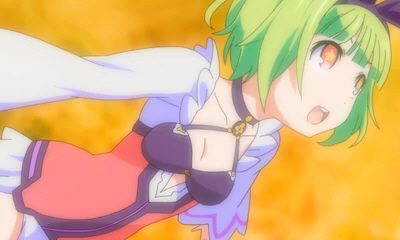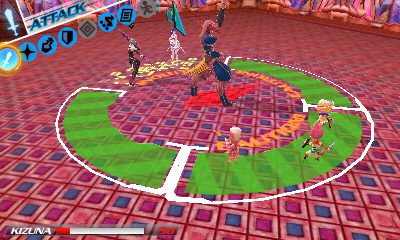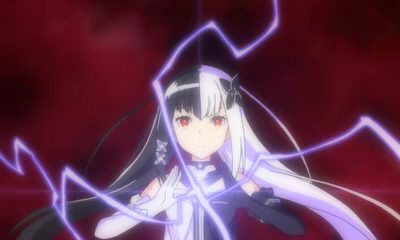Most people who have ever brought a child into the world would tell you that it is a life changing, magical experience. A lot of people find it to be so transformative of an experience that the very essence of who they are, all the way down to their speech patterns, can change. Phrases that sound like “whats a mattew wid daddy’s widdle man” become just as commonplace as a bottle of pacifier disinfectant and the protective gear used for diaper changing. A new parent will often be so enamored with their freshly spawned human that they will take it everywhere with them, even if that particular place is inappropriate for a child. Babies can be seen in churches, night clubs, movie theaters and sometimes even in sprawling labyrinths filled with evil and magical monsters hellbent on destroying the world.
Okay, so that last one may not be true unless you’re considering the parallel world/distant future that is portrayed in Conception II: Children of the Seven Stars. This is a world plagued by nefarious Dusk Circles that are whose growth is fueled by the emotions of mankind, such as lust or greed. Select teens (the game was oddly specific to say between the ages of 16 and 18) have been blessed by the Star God with the power to fight the dastardly denizens of these circles as they spawn, and are relocated to a special academy in which they can be trained in the art of butt kicking. Unfortunately their abilities rely on a magical substance known as Ether, which is not present within the Dusk Circles. Players will assume the role of a character referred to as God’s Gift who has the special ability to generate his own field of Ether so that the teens may enter the circles and bust some heads at the source, rather than waiting for the fight to come to them. At this point you are probably thinking that you’ve heard this story before. “Magical kids save the universe from ultimate destruction” is a pretty tried-and-true trope to the JRPG genre at this point, and Conception II doesn’t even try to deviate from it.
The Bad
Dating sims have never really taken off here in America as a viable game genre, but they have been popular for quite a long time in Japan. Conception II tries its darndest to take the best elements from those types of games to spice up their mediocre turn-based RPG. You deepen this bond by chatting ENDLESSLY with them and picking responses they like, or by bringing them gifts. If you mess up and pick the wrong response to one of your target’s phrases, simply rest or visit a dungeon and you can try again. Typically in a dating sim there would be a handful of potential love interests and you would pick your favorite and attempt to completely woo her. However, in Conception II, your goal is to make babies with ALL the ladies, so there is no reason to get attached to any one heroine in particular, especially when considering there is little to no risk of completely alienating one of them. It makes the “relationship building” portion of the game moot and tedious to work through.

Unfortunately, working through banal dialogue trees like this will be crucial to making epic star babies.
Conception II isn’t the first game to think randomly generating dungeons would be a good idea, and it is a neat concept when it’s done well. Sadly the randomization of the dungeons amounts to little more than a palate swap, so that by the time you’re in your third or fourth labyrinth your memories of them will be blurrier than the night you popped your classmating (more on that in a bit) cherry. In a game that has random dungeons as a main feature it seems to be barely thought out at all. The twist and turns of the labyrinths lead to obvious dead ends filled with trash mobs of enemies that would present little challenge even to the newest of players. Some of these enemies can even be bypassed by running through them if you’re of a high enough level, further removing the feeling of danger one should get when they’re escorting their progeny through a supposedly treacherous demonic playground.
The Pervy
Very early in the game you will learn of the teens’ ability to create “Star Children” through a process called “classmating”. The game goes out of its way to explain that this isn’t actual sex, but then blatantly shows that this so-called religious ritual has sexual overtones. The female partners of the classmating act are stripped down to nothing but a glowing pink silhouette. They then write and moan and twist provocatively until the male character’s glowing blue fingers intertwine with hers, then BLAMO, a star baby pops out of a freaky Russian nesting doll. It’s clear otaku fanservice that will be totally lost on a Western audience and does nothing to further the game’s plot. Thankfully, this cutscene can be skipped because it is used excessively.
The nasty tone of this game’s humor doesn’t stop there. There is a dirty old man character who also happens to be a priest. He frequently expresses his dismay that he doesn’t get to classmate anymore, and the female characters are constantly sexually harassed by other males and females alike (hey, at least they don’t discriminate). I typically don’t like to compare games to other games, but Conception II attempts to use the kind of raunchy, tongue-in-cheek humor that Senran Kagura Burst did so well and fails miserably. It is as if the meanings of “humor” and “shock value” have been crisscrossed during this game’s localization process.
The Good
Making star babies with your female classmates at the magic space ninja school may be wrapped up in lots of pervy nonsense, but once you get past all of that having them on hand is a neat mechanic. The Star Children are essentially minions who will do your bidding in battle, and you will get different results depending on which of the game’s seven heroines you classmate with. There are a ton of different options for the Star Child’s class when they pop out of their dolls, such as a cleric for healing or a gunslinger for ranged attack.
After you wade through the game’s introductory material, you will finally be allowed to attempt to battle. When you enter one of the Dusk Circles, you will need to take a heroine and some Star Children with you. Taking the mother of the selected star babies will make them perform better, but it is not a requirement. Eventually, you will unlock the option to have up to three groups of three star babies with you. While in the dungeon, each group attacks in concert with each other as a single unit, so counting the parents it is essentially a group of four characters maximum.
You attack by first selecting one of the four areas encircling your opponent you’d like to attack from. Attacking from a weak point will net you a bigger damage output, so it would seem like determining the weakness would be key to your battle strategy. However, given the fact that the weak point is marked by an enormous red arrow takes away any amount of thinking or planning that would be involved in taking the beast down.
If you would rather attack the monster from one of the zones that will be hit with its next attack (which are marked “DANGEROUS”), then you can quickly fill up your chain attack meter. Once this is full, the enemy you are currently hacking to pieces will be locked up in ethereal chains. This effectively eliminates some of his turns which allows you to chain together some even bigger damage combos. Once a monster is eliminated, the labyrinth’s Ether density – think of Ether as the good guys’ magic juice – will raise one level, which has the fortunate effect of making your team move faster, and the fastest characters always go first. That is what success in combat boils down to; altering the turn order either through chains or bumping up the Ether density, and then eliminating a foe before they have the chance to retaliate. Unfortunately, these neat changes to turn-based combat seem like they were never fully realized. Most battles are far too easy and it is often unnecessary to even bother trying to make sure you go first. Victories can usually be obtained by simply hitting the weak spot a couple times and calling it a day.
I think people that chose to raise a child are some of the bravest people in the world. For a good portion of this tiny person’s life you have to make so many crucial decisions for them; like what they will eat, the clothes they wear and where they will live. You just also might have to decide if they wield blades in battle or cast magic at their enemies from a safe distance. Conception II isn’t all bad: it’s just really raunchy without managing to be funny, and the rest of the game is very drab and never pushes the envelope far enough to be considered unique. Whatever those choices may be, it takes a lot of chutzpah to make any type of decision, no matter how big or small. If you decide to play this game, there are only two likely reactions you will have. Either you will think it is just boring and trashy, or you will want to cuddle up with your waifu pillow, shove your stack of hentai mags aside and flip open your 3DS to submerge yourself in the world of Conception II and classmate endlessly with its freakishly proportioned heroines.
Pros:
- Combat system is different than other turn-based games
- Otaku will cry tears of happiness
Cons:
- Most key aspects of the game (dungeons, heroines’ personalities, etc) are incredibly boring
- Too much smut and not enough humor
- This particular type of storyline is soooooo tired









